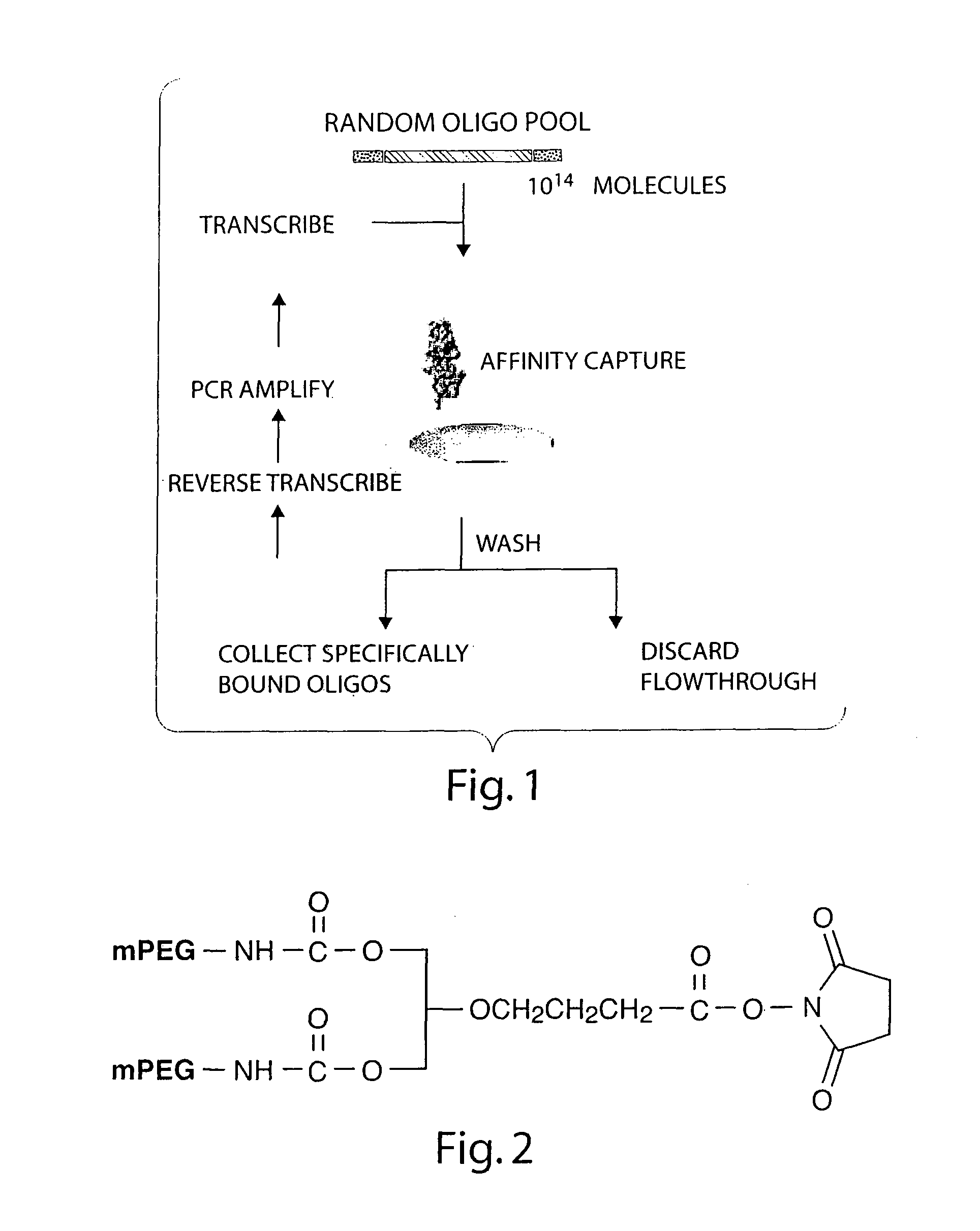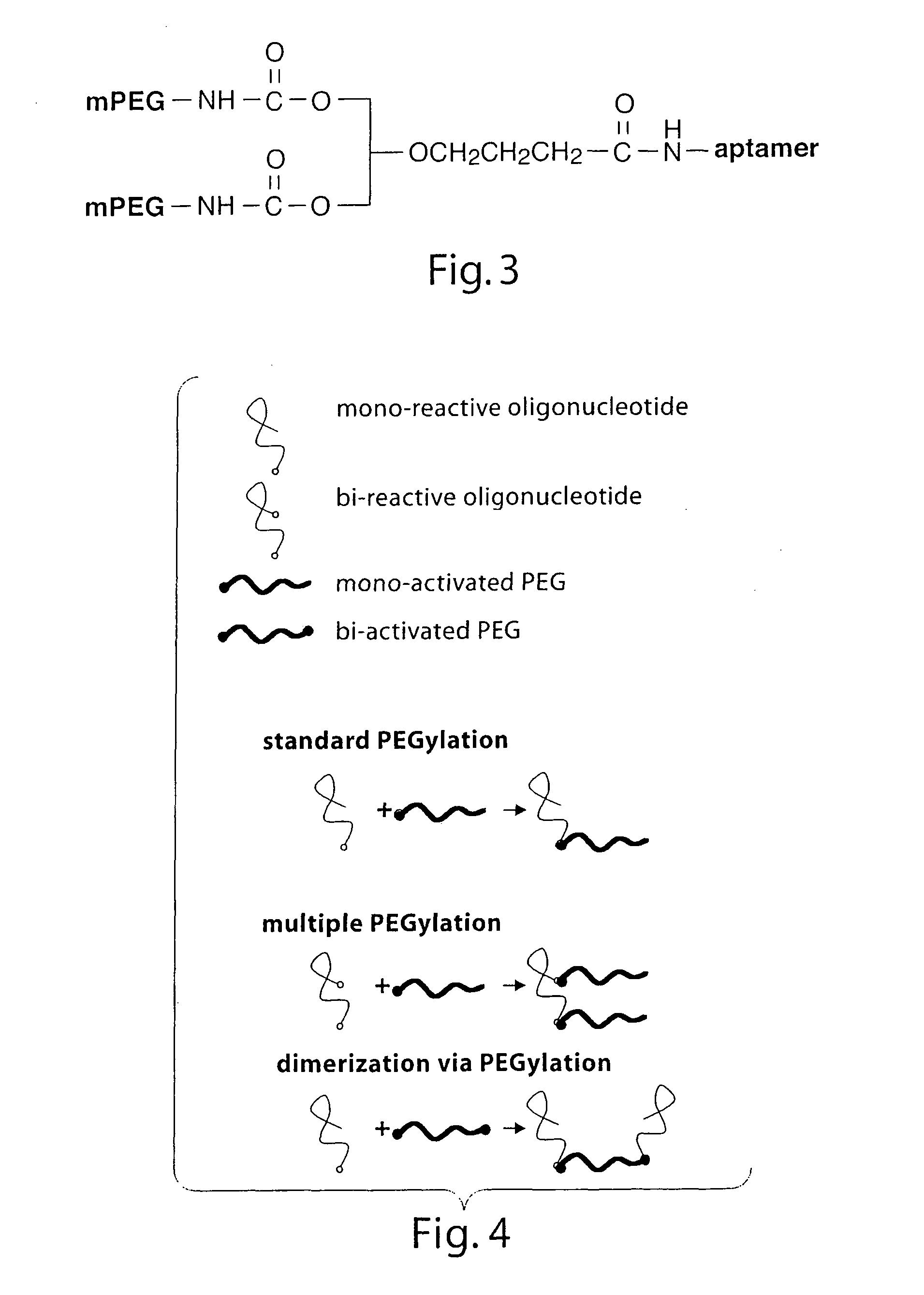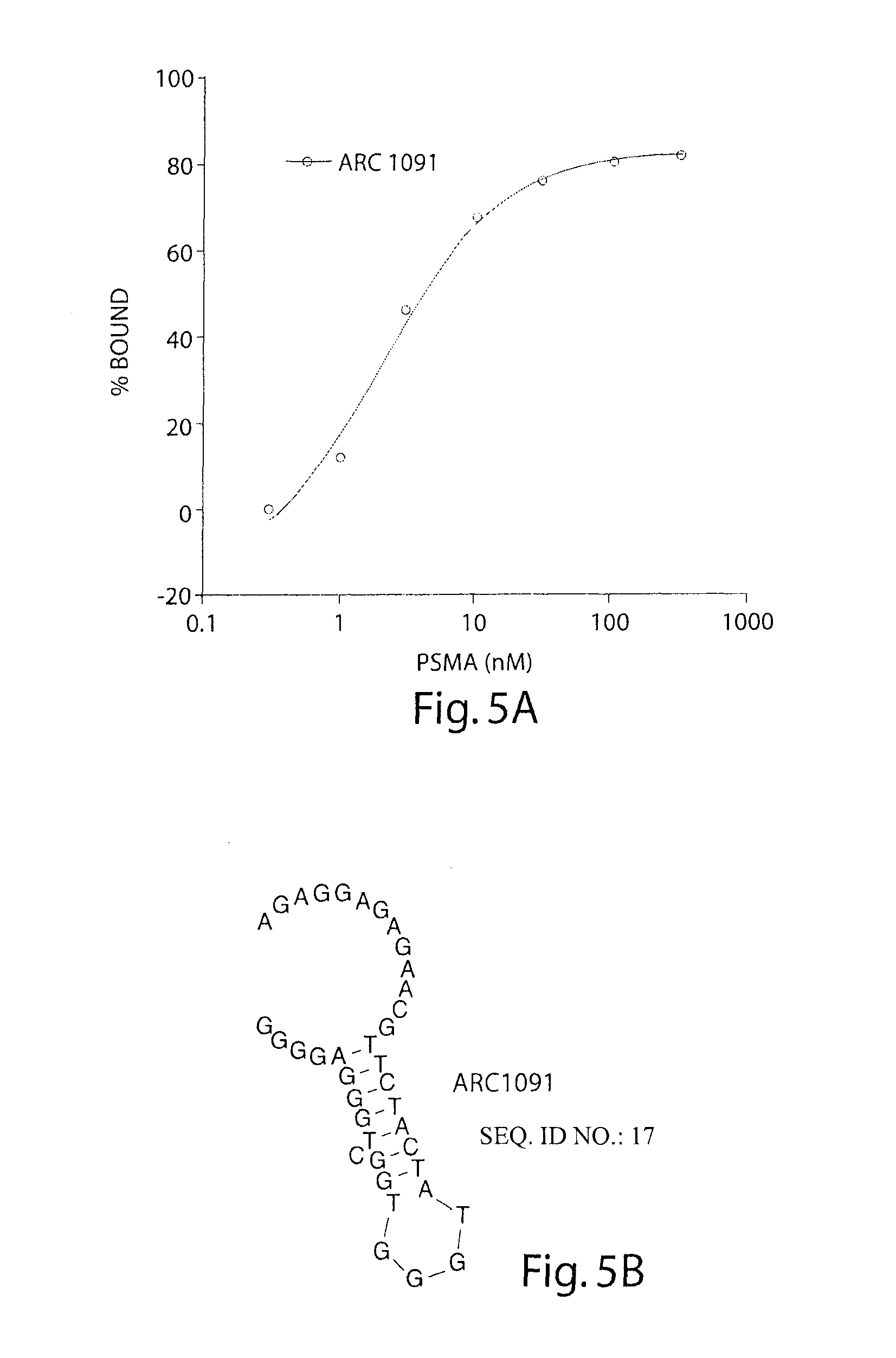Stabilized aptamers to PSMA and their use as prostate cancer therapeutics
a technology of aptamers and psma, applied in the field of nuclear acids, can solve the problems of scalability and cost, severe limitations, and difficulty in eliciting antibodies to aptamers, and achieve the effects of improving affinity, preventing and/or ameliorating prostate cancer, and increasing affinity and specificity for binding
- Summary
- Abstract
- Description
- Claims
- Application Information
AI Technical Summary
Benefits of technology
Problems solved by technology
Method used
Image
Examples
example 1
Aptamer Selection and Sequences
Example 1A
De Novo Selections for Anti-PSMA Aptamers of rGmH Composition
[0239]De novo selections were initiated against an N-terminally 6-His tagged version of the extracellular domain of human PSMA using the Ni-NTA agarose bead pull down selection method described below. A selection using the rGmH pool composition (2′-OH G, 2′O-Me A, C, and U) was initiated. Two aptamers of moderate to high affinity, ARC955 (G2) and ARC956 (G8), were obtained. The sequences and binding data for these two clones are described below.
[0240]Protein Purification of ECD of PSMA: An I.M.A.G.E. clone (5202715) encoding full length recombinant human PSMA was purchased from Open Biosystems (Clone EHS1001-18533, Huntsville, Ala.). PCR was used to amplify the extracellular portion of the full length clone. An oligo with an N-terminal histidine tag was designed to engineer a construct which lacks the transmembrane domain residues 1-44. The his-tagged extracellular domain (ECD) was ...
example 2
Composition and Sequence Optimization
[0253]In Example 2A, the PSMA specific aptamer designated ARC955 (G2) that was derived from the rGmH selection described in Example 1 was further optimized via synthetic truncations. The work in Example 2B-Example 2E describes the results of efforts to improve clone A9, an existing PSMA specific aptamer of rRfY composition (2′-OH purines (A and G) and 2′-fluoro pyrimidines (C and U)), denoted as the A9 clone herein, with the following sequence consisting of: 5′GGGAGGACGAUGCGGACCGAAAAAGACCUGAfCfUfUfCfUAfUAfCfUAAGfUfCfUAf CGfUfUfCfCfCAGAfCGAfCfUfCGfCfCfCGA3′ (SEQ ID NO 168) through post-SELEX™ optimization. The A9 clone was described in a patent application having U.S. Ser. No. 09 / 978,969 filed Oct. 16, 2001 herein incorporated by reference in its entirety. The A9 clone (SEQ ID NO 168) was extensively optimized via synthetic truncations (Example 2B), cell-surface doped SELEX™ (Example 2C), engineered mutations (Example 2D), and engineered backbone ...
example 2a
Minimization and Optimization of ARC955 (G2) Aptamer
[0254]In order to identify the core structural elements required for ARC955 binding to PSMA, the 3′-boundaries of the clone was determined through alkaline hydrolysis. The parent RNA transcript was labeled at the 5′-end with γ-32P ATP and T4 polynucleotide kinase. Radiolabeled ligands were subjected to partial alkaline hydrolysis and then selectively bound in solution to ECD PSMA (purified in house) at 100 nM before being passed through nitrocellulose filters (Centrex MF 1.5 mL, 0.45 μm, Schleicher & Schuell, Keene N.H.). Retained oligonucleotides were resolved on 8% denaturing polyacrylamide gels. The smallest oligonucleotide bound to PSMA defined the 3′-boundary. On the basis of the boundary experiments as well as visual inspection of predicted folds, truncated constructs were synthesized. Clones were then assayed by dot blot as previously described to determine their KD. ARC1091 represents the smallest minimer tested that mainta...
PUM
| Property | Measurement | Unit |
|---|---|---|
| dissociation constant | aaaaa | aaaaa |
| molecular weight | aaaaa | aaaaa |
| solubility | aaaaa | aaaaa |
Abstract
Description
Claims
Application Information
 Login to View More
Login to View More - R&D
- Intellectual Property
- Life Sciences
- Materials
- Tech Scout
- Unparalleled Data Quality
- Higher Quality Content
- 60% Fewer Hallucinations
Browse by: Latest US Patents, China's latest patents, Technical Efficacy Thesaurus, Application Domain, Technology Topic, Popular Technical Reports.
© 2025 PatSnap. All rights reserved.Legal|Privacy policy|Modern Slavery Act Transparency Statement|Sitemap|About US| Contact US: help@patsnap.com



